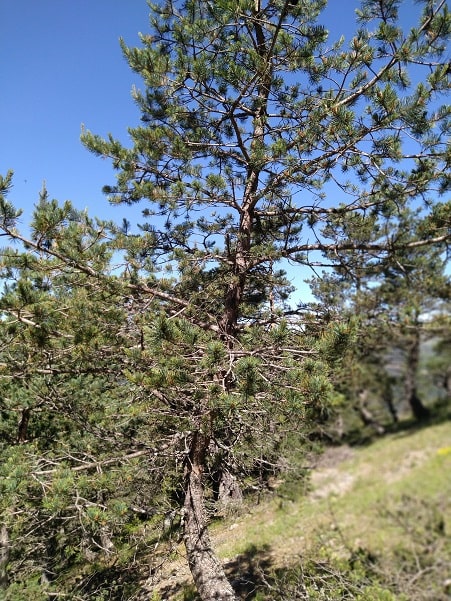What kind of climate does the United States have?

What is the climate like in the United States? The United States has a diverse climate due to its vast size and geographical variations. It experiences a wide range of climatic conditions, from arctic conditions in Alaska to tropical climates in Hawaii and the southernmost parts of Florida. Generally, the United States can be divided into several broad climate regions:
- Northeast: The northeastern states, including New England, have a humid continental climate with cold winters and warm to hot summers. Snowfall is common during winter months.
- Southeast: The southeastern states have a humid subtropical climate, characterized by hot, humid summers and mild winters. This region is prone to hurricanes and receives abundant rainfall throughout the year.
- Midwest: The Midwest region has a varied climate, with hot summers and cold winters. It experiences a mix of humid continental and humid subtropical climates, with more continental conditions in the northern parts and more subtropical conditions in the southern areas.
- Great Plains: The Great Plains region has a semi-arid to continental climate. It experiences hot summers, cold winters, and limited precipitation, with more extreme temperature variations as you move further inland.
- Southwest: The southwestern states, such as Arizona and New Mexico, have a desert climate, characterized by hot summers, mild winters, and low precipitation. This region is known for its arid landscapes and high temperatures.
- West Coast: The West Coast states, including California, Oregon, and Washington, have a Mediterranean climate along the coast, with mild, wet winters and dry, warm summers. Inland areas, particularly in the mountainous regions, experience more continental and alpine climates with colder winters and more precipitation.
- Alaska: Alaska has a diverse climate, with arctic conditions prevailing in the northern regions and a subarctic climate in the south-central parts. The state experiences long, cold winters and short, cool summers.
- Hawaii: Hawaii has a tropical climate, characterized by consistent temperatures throughout the year, high humidity, and abundant rainfall. The coastal areas are typically warmer than the higher elevations.
It’s important to note that these descriptions provide a general overview, and there can be significant variations within each region. Additionally, climate change and natural climate patterns can influence local weather conditions and trends over time.
The United States has a diverse range of climates due to its vast size and geographic diversity. It encompasses several climate zones, including: Temperate Climate: Much of the eastern and central parts of the United States experience a temperate climate, characterized by four distinct seasons. Summers are generally warm to hot, while winters can be cold, with moderate precipitation throughout the year.
Mediterranean Climate: Parts of California, particularly along the coast, have a Mediterranean climate. These areas have mild, wet winters and warm, dry summers. They typically receive most of their rainfall during the winter months.

Desert Climate: The southwestern states, such as Arizona, Nevada, and parts of New Mexico and California, have a desert climate. These areas are known for their hot summers, mild winters, and very low precipitation. They often experience wide temperature variations between day and night.
Humid Subtropical Climate: The southeastern states, including Florida, Georgia, and parts of Texas and Louisiana, have a humid subtropical climate. This climate is characterized by hot and humid summers, mild winters, and high precipitation throughout the year.
Continental Climate: The northern and central states, such as the Midwest and the Great Plains, have a continental climate. This climate is characterized by hot summers and cold winters, with a significant variation in temperatures between seasons. Precipitation can vary, with some areas experiencing more rainfall and others more snowfall.
Alpine and Tundra Climate: High-elevation regions, particularly in the Rocky Mountains and Alaska, have an alpine or tundra climate. These areas are characterized by cold temperatures, long winters, and short, cool summers. Precipitation can vary, but it is generally moderate to low.
It’s important to note that within each of these broad climate zones, there can be variations and microclimates influenced by factors such as elevation, proximity to water bodies, and local topography.
The climate in the United States varies across the states. For this, information about the whole geography should be given for the climate of the United States of America. The United States, which spans a large surface area, has quite different climate types and landforms. Because of the mountain ranges running parallel to the east and west coasts, the continental climate prevails in most of the country, except for these coastlines, since the ocean influence does not extend to the interior. Therefore, we can say that there are very large temperature differences across the United States. In the winter months, with the effect of the cold air coming from the north, harsh and cold climate characteristics are seen, while in the summer months, very hot and dry climate characteristics are observed with the effect of the hot air coming from the south. Since the central parts of the country are very high, large temperature differences are not seen in these regions.
Climate characteristics of the United States of America
Central regions receive plenty of precipitation in summer due to the humid air coming from the ocean. In the midwestern regions, precipitation is less. While a mild rainy and temperate climate is observed in the southern regions, which have a coast to the Atlantic Ocean, the winters are harsher and colder in the northern coasts. Since tropical climate features dominate the southern regions on the Gulf of Mexico, summers are hot and winters are mild. Although the coastline of Alaska, one of the states outside the mainland, is under the influence of the ocean, very severe colds are seen in the interior regions, especially in winter. In Hawaii, which is one of the states outside the mainland, subtropical climate features dominate, and a mild weather that does not change much throughout the year prevails.
What kind of climate does the United States have?
There are no trees in this area, which is covered with snow most of the year; only some grasses and lichens constitute the dominant vegetation. From the end of the tundra strip, forest areas begin. The Rocky Mountains to the west and the Appalachian Mountains to the east are areas of dense forest cover. What are the 4 main types of vegetation in the US? What is the climate and vegetation of the United States? The spread of the American continent over a great distance in the north-south direction has led to the formation of various climate types in this continent. In addition, the presence of mountainous regions in the east and west, the presence of basins separated from the sea by these mountainous areas in the interior, and the presence of ocean currents at different temperatures on the coasts further diversify the climate of the continent. What type of weather is found in South America but not in Central America? What is the climate in much of the interior of South America? How would you expect the climate of western South America to be influenced by the Pacific Ocean?
What are the climate and vegetation of the USA?

What are the climates and vegetation? A wide variety of climate types are seen in the Americas, from cold climates in the north to tropical-equatorial climates and Mediterranean climates on the west coast of North America, from steppe and even desert climates in the interior to mountain climates that make themselves feel at high altitudes. Depending on these various climate types, the natural vegetation of the continent also varies. There is a tundra strip formed by cold climatic conditions in the north. There are no trees in this area, which is covered with snow most of the year; only some grasses and lichens constitute the dominant vegetation. From the end of the tundra strip, forest areas begin. The Rocky Mountains to the west and the Appalachian Mountains to the east are areas of dense forest cover.
In the central part of North America, it extends westward from the west of the Mississippi, about 1.5 m. There is a lush vegetation called “preri” consisting of tall grasses. As you go west from the prairies, areas dominated by shorter grasses are passed. In South America there are equatorial forests on both sides of the equator with abundant rainfall. These forests cover the entire Amazon basin; Apart from this, the Andes are also covered with forests up to a certain height.
North and South America are similar in terms of river basins. The presence of high mountain ranges in the western parts of both has resulted in the direction of the great rivers to the east and southeast. North America is very different from South America in terms of the number and size of lakes. Large lakes were formed in the pits opened by the spread of the fourth time glaciers and then retreating. Today, some of them are located on the United States-Canada border (Superior, Michigan, Erie, Ontario, Huron), and some are entirely in Canada (Great Dipper, Great Captive, Athabaska, and Winnipeg).
Lake-poor South America’s most important lake is Titicaca in the Andes, and it is smaller than any of the major North American lakes. America’s climate >>





